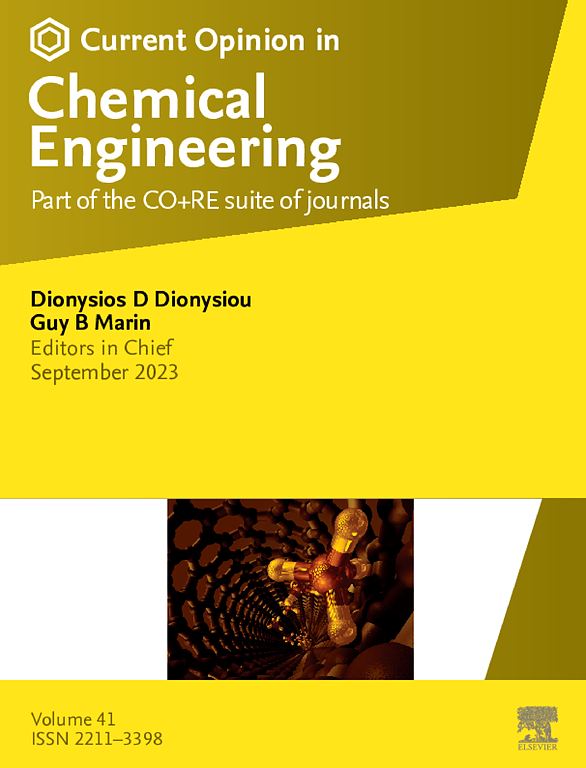木质素基膜在健康、食品安全、环境和能源方面的应用:当前趋势和未来方向
IF 6.8
2区 工程技术
Q1 BIOTECHNOLOGY & APPLIED MICROBIOLOGY
引用次数: 0
摘要
聚合物基膜技术旨在解决分离、净化、运输、伤口愈合、污染物去除等关键需求。虽然这些膜的强大性能是一个优先事项,但也迫切需要可持续的、具有成本效益的膜材料解决方案,以取代造成重大环境问题的全氟化和石油衍生聚合物。木质素是天然含量第二高的聚合物,是纸浆和造纸工业以及纤维素生物炼制的废弃副产品,具有推动可持续材料革命的巨大潜力。这种未充分利用的生物聚合物具有许多物理和化学特性,使其适用于生物医学,环境和能源应用。例如,木质素及其功能化衍生物具有抗菌、抗氧化、紫外线(UV)阻隔和屏障特性,这些特性对于减缓药物释放、减轻压力的伤口愈合、对抗抗生素耐药性和无菌食品包装/保存至关重要。另一方面,木质素的3D、超支化结构、酚类单位和易于功能化的机会,使其具有独特的物理、机械、热、化学和离子传输/分离特性,对清洁水和清洁能源技术至关重要。因此,通过将富含木质素的生物质原料和工业废物转化为增值、高效的产品,我们有可能满足全球对清洁水、安全食品、负担得起的医疗保健和可再生能源的需求,正如联合国可持续发展目标所概述的那样。这篇小型综述强调了木质素基膜设计在生物医学、环境和能源应用方面的最新进展,并简要讨论了通过木质素增值在这一新兴领域的改进空间。本文章由计算机程序翻译,如有差异,请以英文原文为准。
Lignin-based membranes for health, food safety, environmental, and energy applications: current trends and future directions
Polymer-based membrane technologies aim to address critical needs for separation, purification, transport, wound healing, contaminant removal, and more. While robust performance from these membranes is a priority, there is also a pressing need for sustainable, cost-effective solutions for membrane materials to replace perfluorinated and petroleum-derived polymers, which pose significant environmental concerns. Lignin, the second most naturally abundant polymer and a waste by-product of pulp and paper industries and cellulosic biorefineries, offers immense potential to drive sustainable materials revolution. This largely underutilized biopolymer possesses many physical and chemical attributes, making it suitable for biomedical, environmental, and energy applications. For instance, lignin and its functionalized derivatives offer antimicrobial, antioxidant, ultraviolet (UV)-blocking, and barrier properties, which are essential for slow drug release, wound healing with reduced stress, combating antibiotic resistance, and sterile food packaging/preservation. On the other hand, lignin’s 3D, hyperbranched architecture, phenolic units, and facile functionalization opportunities enable unique physical, mechanical, thermal, chemical, and ion transport/separation characteristics, critical for clean water and clean energy technologies. Therefore, by transforming lignin-rich biomass feedstock and industrial waste into value-added, efficient products, we can potentially address global needs for clean water, safe food, affordable healthcare, and renewable energy, as outlined in the United Nations’ Sustainable Development Goals. This mini-review highlights recent advancements in lignin-based membrane designs for biomedical, environmental, and energy applications, alongside a brief discussion on rooms for improvement in this emerging field via lignin valorization.
求助全文
通过发布文献求助,成功后即可免费获取论文全文。
去求助
来源期刊

Current Opinion in Chemical Engineering
BIOTECHNOLOGY & APPLIED MICROBIOLOGYENGINE-ENGINEERING, CHEMICAL
CiteScore
12.80
自引率
3.00%
发文量
114
期刊介绍:
Current Opinion in Chemical Engineering is devoted to bringing forth short and focused review articles written by experts on current advances in different areas of chemical engineering. Only invited review articles will be published.
The goals of each review article in Current Opinion in Chemical Engineering are:
1. To acquaint the reader/researcher with the most important recent papers in the given topic.
2. To provide the reader with the views/opinions of the expert in each topic.
The reviews are short (about 2500 words or 5-10 printed pages with figures) and serve as an invaluable source of information for researchers, teachers, professionals and students. The reviews also aim to stimulate exchange of ideas among experts.
Themed sections:
Each review will focus on particular aspects of one of the following themed sections of chemical engineering:
1. Nanotechnology
2. Energy and environmental engineering
3. Biotechnology and bioprocess engineering
4. Biological engineering (covering tissue engineering, regenerative medicine, drug delivery)
5. Separation engineering (covering membrane technologies, adsorbents, desalination, distillation etc.)
6. Materials engineering (covering biomaterials, inorganic especially ceramic materials, nanostructured materials).
7. Process systems engineering
8. Reaction engineering and catalysis.
 求助内容:
求助内容: 应助结果提醒方式:
应助结果提醒方式:


